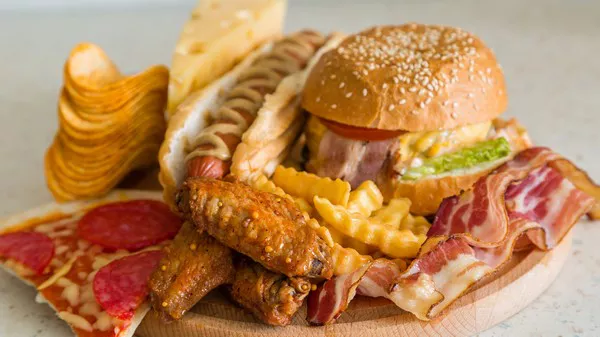Nearly one million California workers are on the cusp of substantial wage hikes, following a display of labor union influence within the state’s Democratic-led Legislature. This development comes in the wake of high-profile strikes in the entertainment and hospitality sectors over the summer.
Under a new bill designed to resolve wage and working condition disputes between the industry and labor unions, the majority of the state’s 500,000 fast food workers could earn a minimum of $20 per hour starting next year. Additionally, approximately 455,000 healthcare workers, excluding doctors and nurses but encompassing personnel performing various roles in hospitals, dialysis clinics, and similar facilities, will witness their salaries gradually increase to at least $25 per hour over the next decade through a separate bill.
For these proposals to become law, they must first navigate the state Legislature’s approval and secure the signature of Governor Gavin Newsom. However, both labor unions and industry groups have given their endorsement, paving the way for expected passage this week before the legislative session adjourns.
This development also holds a silver lining for voters, as the fast food industry has agreed to withdraw its referendum on a fast food law signed by Governor Newsom last year, resulting in a less crowded November 2024 ballot.
These bills, introduced on Monday, mark another significant achievement for labor unions within California’s state Legislature this year. On the same day, the state Assembly advanced a proposal to grant striking workers unemployment benefits. This policy alteration could potentially benefit striking Hollywood actors, writers, and hotel workers in the Los Angeles area who have been on strike for a substantial part of this year.
Mary Kay Henry, the international president of the Service Employees International Union, highlighted the transformative impact of fast food workers on wage politics, stating, “I think fast food cooks and cashiers have fundamentally changed the politics of wages in this country and have reshaped what working people believe is possible when they join together and take on corporate power and systemic racism.”
California’s minimum wage already ranks among the highest in the nation at $15.50 per hour. The fast food bill would elevate this minimum wage to $20 per hour for workers at restaurants in California with at least 60 nationwide locations. However, there is an exception for restaurants that produce and sell their own bread, such as Panera Bread.
According to the Service Employees International Union, this bill will impact around 500,000 fast food workers in California, many of whom hold multiple jobs to make ends meet.
For fast food workers, the $20 hourly wage represents a starting point. A Fast Food Council, composed of industry and labor representatives, will have the authority to annually increase the minimum wage by up to 3.5% or in accordance with the change in the U.S. consumer price index for urban wage earners and clerical workers, whichever is lower.
The salary increase for healthcare workers is a more intricate process. Their wages will gradually rise over the next decade, contingent on their workplace. For instance, employees of large healthcare facilities and dialysis clinics will witness their pay rise to at least $23 per hour next year, escalating to $25 per hour by 2026. Conversely, workers at rural hospitals serving numerous Medicaid patients will see their salaries increase to at least $18 per hour next year, with annual 3.5% increments until reaching $25 per hour in 2033.
Workers at community clinics will observe their salaries grow to at least $21 per hour in 2024 before reaching $25 per hour in 2027. Salaries at all other covered healthcare facilities will climb to at least $21 per hour next year before attaining $25 per hour by 2028.
Tia Orr, executive director of the Service Employees International Union-California, emphasized the significance of wage increases in addressing the healthcare workforce crisis, stating, “Everyone in the healthcare sector understands that we have a workforce crisis, and that wages are the essential prerequisite for any solution. With this increase, more workers will join and stay in the healthcare workforce, and as a result, Californians will be safer and better cared for.”
While it is uncommon, certain states have specific minimum wage standards for particular industries. For instance, Minnesota established a council to determine wages for nursing home workers, and in 2021, Colorado instituted a $15 minimum wage for direct care workers in home and community-based services.
In California, most fast food workers are over 18 and serve as the primary providers for their families, according to Enrique Lopezlira, director of the University of California-Berkeley Labor Center’s Low Wage Work Program. The majority of healthcare workers in the state are women (over 75%) and workers of color (76%), according to a UC Berkeley Labor Center study published earlier this year.
Hospitals have expressed support for the bill, as it “ensures that wages for healthcare workers are set by the state, creating greater equity for all of California’s healthcare workforce,” according to Carmela Coyle, president and CEO of the California Hospital Association.
The fast food industry benefits from this development by averting two proposed measures that they believed would have made restaurant operations considerably more challenging in California. Labor unions have agreed to withdraw a bill holding major fast food corporations, like McDonald’s, liable for the actions of independent franchise operators in the state. Additionally, Democrats in the state Legislature have agreed to eliminate funding for the Industrial Welfare Commission, an agency with the authority to establish wage and workplace standards across various industries.
Matt Haller, president and CEO of the International Franchise Association, described this development as providing meaningful wage increases for workers while simultaneously eliminating potential threats, costs, and regulatory burdens targeting local restaurants in California.

